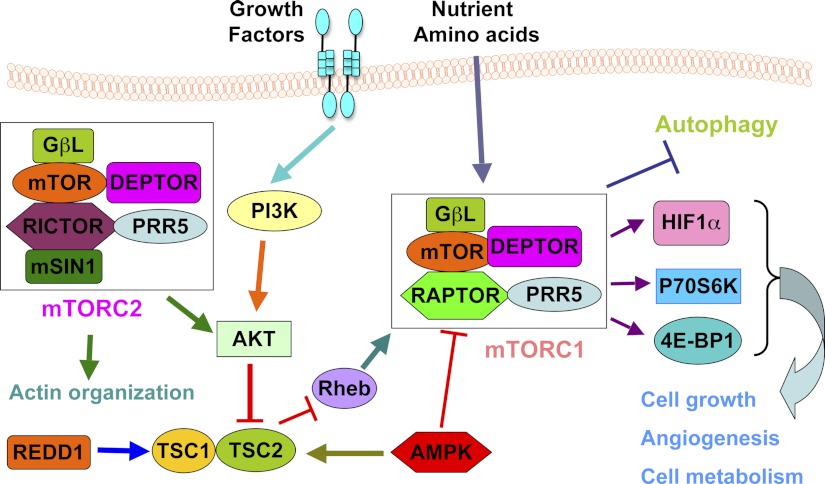Fig. 2.
Schematic illustration of the mTOR signaling network. Signals such as growth factor and nutrients cause a coordinated cellular response through interplaying with mTORC1 and mTORC2. mTORC1 promotes cell growth, angiogenesis, and cell metabolism and inhibits autophagy. mTORC2 promotes actin organization. AMPK, AMP-activated kinase; DEPTOR, DEP domain-containing mTOR-interacting protein; 4E-BP1, eukaryotic initiation factor 4E-binding protein-1; HIF1α, hypoxia-inducible factor 1α; mLST8/GβL, mammalian lethal with Sec13 protein-8/G protein β-subunit-like protein; mSin1, stress-activated protein kinase interacting protein. mTOR, mammalian target of rapamycin; mTORC1, mTOR complex 1; mTORC2, mTOR complex 2; PI3K, phosphatidylinositol 3-kinase; PRAS40, proline-rich Akt substrate of 40 kDa; PROTOR, protein observed with Rictor-1; Raptor, regulatory-associated protein of mTOR; Rheb, Ras homolog enriched in brain; Rictor, Rptor-independent companion of mTOR; S6K, ribosomal p70 S6 kinase. TSC, tuberous sclerosis complex.

